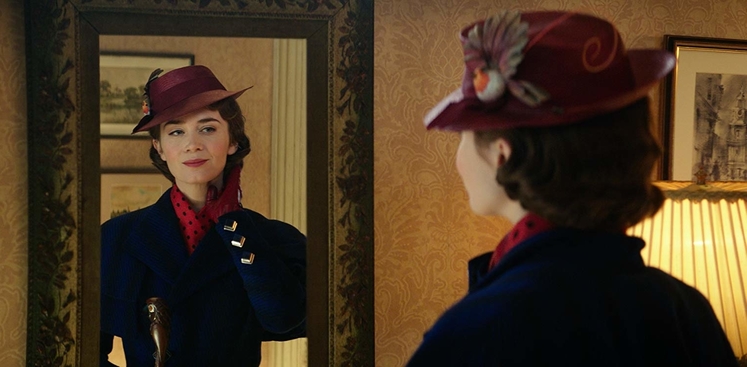Even in times of rampant cynicism, Mary Poppins can bring a smile to your face. So although the belated sequel Mary Poppins Returns can’t match the magic of its Oscar-winning 1964 predecessor, the relentless optimism and compassionate lessons of its titular nanny are timeless.
After all, this celebration of childhood innocence and the power of imagination contains the sort of old-fashioned wholesomeness you rarely see anymore, especially among children’s movies that too often pander to slapstick crudeness and short-attention spans. Still, it’s disappointing that with such bland songs and formulaic storytelling, this breezy follow-up seems driven more by commercial than creative means.
In this whimsical adventure, Mary Poppins (Emily Blunt) descends from the sky on her flying umbrella just in time to help the next generation of the Banks family out of another jam.
The children she tutored in the first film are now grown up. Michael Banks (Ben Whishaw) works at the London bank where he invested his tuppence as a child, except now he’s a struggling artist about to lose the family house on Cherry Tree Lane to foreclosure by a corrupt financier (Colin Firth).
It’s up to Mary Poppins and her cockney lamplighter friend (Lin-Manuel Miranda) to clean up the mess by caring for Michael’s three adorably mischievous youngsters — with her usual blend of sternness and playfulness — while helping the family rediscover its compass.
As directed by Rob Marshall (Chicago), the film is visually dazzling, from the evocative sets and costumes to the seamless animation and special effects. He even manages a few appreciative nods to Robert Stevenson’s forerunner.
Blunt capably inherits a role immortalized by Julie Andrews, and a handful of cameos are amusing. However, the screenplay by David Magee (Finding Neverland), again based on the books of P.L. Travers, tries too hard to replicate the original film rather than carving its own niche.
The musical sequences are the biggest drawback. While many fans of Mary Poppins can sing along to a handful of songs from memory, that likely won’t be the case here. Among the elaborate but forgettable production numbers, only the delightful closer “Nowhere to Go But Up” stands out.
Despite such flaws, the film generates plenty of nostalgic charm while introducing a new generation to its iconic protagonist. Plus, there are are worse things than kids being taught proper manners. Spit spot!





